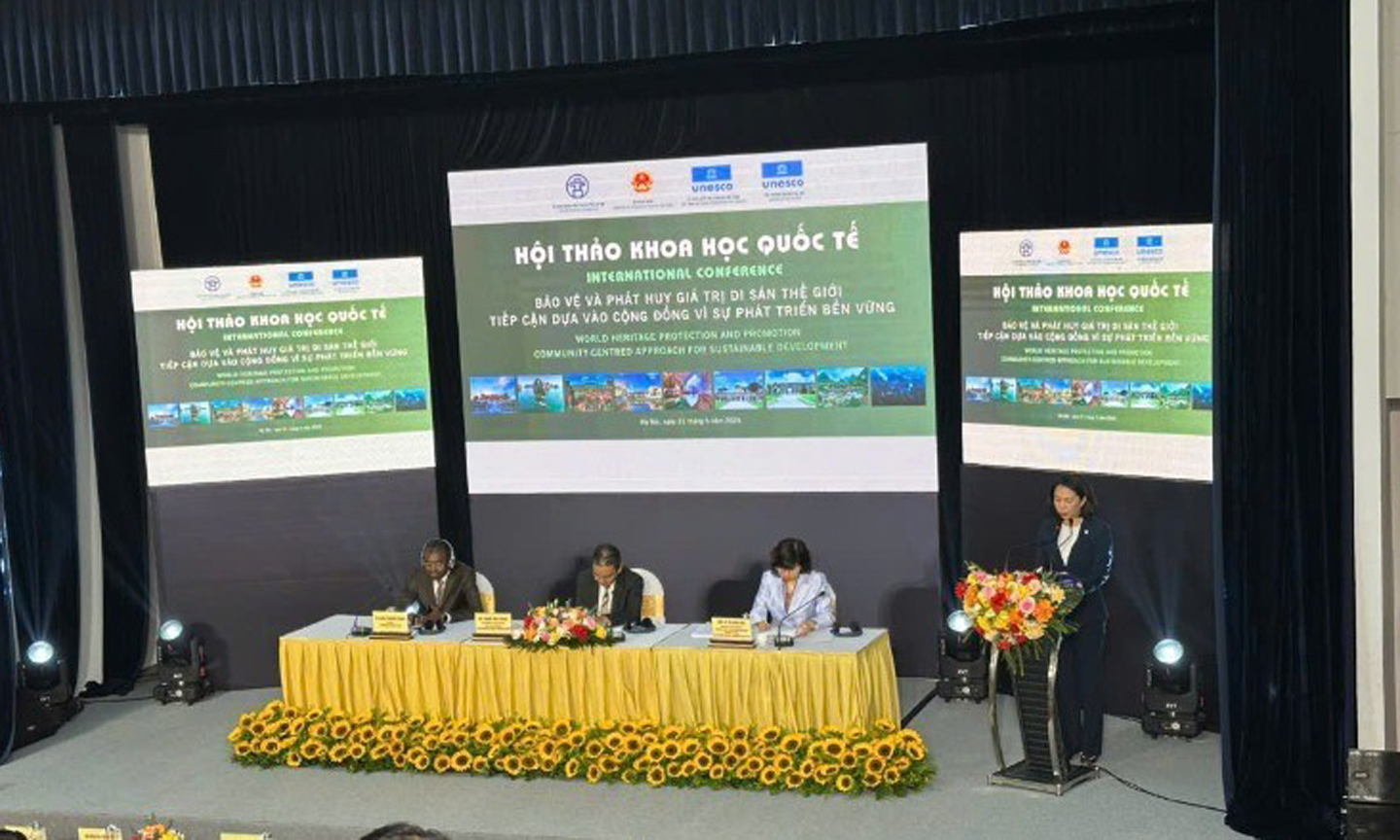Promoting the value of World Heritage through community participation
ABO/NDO- Local communities are the owners of heritage in general, and of world heritage in particular. Enabling local people to participate in the decision-making process, organise cultural activities, and benefit economically and socially from heritage-related initiatives will ensure the long-term sustainability of each heritage.
On the morning of May 21, at the Thang Long Imperial Citadel World Heritage Site (Ha Noi), the Ministry of Foreign Affairs, the Viet Nam National Commission for UNESCO, in coordination with the UNESCO Office in Viet Nam and the People's Committee of Ha Noi, held the international scientific workshop “Protecting and Promoting the Value of World Heritage: Community-based Approaches for Sustainable Development.”
Attending the workshop was Mr Lazare Eloundou Assomo, Director of the UNESCO World Heritage Centre.
The workshop was one of the events within the series of activities implementing the 2021–2025 Action Plan of the Viet Nam National Commission for UNESCO, and the Viet Nam–UNESCO Cooperation Memorandum for the 2021–2025 period.
According to Mr Jonathan Baker, Head Representative of the UNESCO Office in Viet Nam, local communities are not only beneficiaries of heritage conservation but also key stakeholders and custodians of these values.
 |
| Vice Chairwoman of the Ha Noi People's Committee Vu Thu Ha speaking at the workshop. |
Placing the community at the centre means enabling local people to participate in the decision-making process, organise cultural activities, and benefit economically and socially from heritage-related initiatives. This ensures long-term sustainability as well as economic development for the locality.
Viet Nam currently has eight cultural and natural heritage sites recognised by UNESCO as World Heritage Sites. All these heritages are being effectively protected and promoted. In 2024 alone, these eight world cultural and natural heritage sites welcomed a total of approximately 14.9 million visitors.
On November 23, 2024, the National Assembly passed the Law on Cultural Heritage, contributing to fully institutionalising the party and state’s policies on cultural heritage. The government is currently preparing to issue three decrees to concretise the matters raised in the Law on Cultural Heritage.
In terms of management, protection, and promotion of value, over the years, Viet Nam has created conditions for people to participate in this process proactively and actively in various forms.
Typical examples include the Thang Long Imperial Citadel becoming a space for organising numerous educational and experiential activities for students.
In Hoi An, local residents are provided with financial support to restore and embellish valuable houses. Meanwhile, in Ha Long Bay, many cultural values and practices of the communities living within the heritage area are being utilised for tourism development.
In Phong Nha–Ke Bang, local people are paid to take part in forest protection and are allowed to collect certain forest products to serve their livelihood.
In addition, in many areas, intangible cultural heritage forms of communities living within heritage zones are being preserved, exploited, and promoted for economic development.
At the workshop, delegates shared experiences from the perspectives of state management and heritage ownership in promoting the value of world heritage to serve local socio-economic development and improve people’s lives.
On the occasion, Lazare Eloundou Assomo, Director of the World Heritage Centre, responded to several issues raised by the delegates, providing technical advice on protecting and promoting the value of world heritage using community-based approaches and sharing some international experiences.
The scientists proposed several recommendations for heritage management such as: continuing to improve the legal framework; enhancing awareness as well as the role and participation of the community — as they are the true owners of heritage; strengthening environmental protection, sustainable use of resources, and sustainable tourism development; improving the capacity of heritage management personnel; and applying information technology and digital transformation in heritage management, conservation, and promotion.
(Source: NDO)
 về đầu trang
về đầu trang







